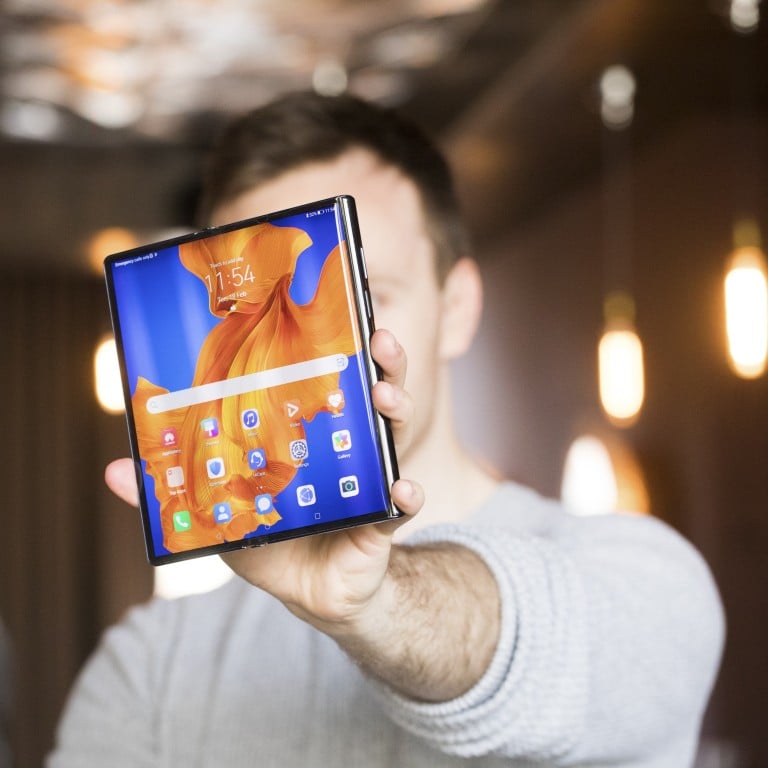
With no Google Play Store, here’s how the Huawei Mate Xs phone plans to attract buyers outside China
- Huawei’s devices can not include pre-installed Google apps or run any Google services limiting its appeal outside China
- The phone maker is investing a billion dollars in creating its own app ecosystem
Huawei unveiled the Huawei Mate Xs over the weekend, alongside the new MatePad Pro tablet. As expected, there was no mention of Google. With each new Huawei device that launches without the Google Play Store, it appears increasingly unlikely that the platform schism caused by the US trade blacklist will be mended any time soon.
With the upcoming launch of the Huawei P40 next month, should consumers even be considering smartphones from Huawei? And what is the Chinese device maker doing to create its own mobile ecosystem?
How is Huawei able to do that? Well, Android was created as an open-source project, and remains that way today. Officially known as Android Open Source Project, or AOSP, the operating system provides the core capabilities found in all Android device. Indeed, security updates for Android are released under the auspices of AOSP.

That means Huawei can continue to leverage its considerable know-how in creating top-notch Android smartphones. The only difference is that it cannot pre-install apps from Google or offer Google services.

But the biggest impact probably comes from the absence of Google Play Store. The window to millions of Android apps from the wonky to the essential, this would have been the death knell to any non-Chinese smartphone maker. But because Huawei still has a huge base in China who don’t care about Google apps, this gives it a window of opportunity to build up its app store.
As chance has it, Huawei globally launched its “AppGallery” app store on the Huawei P20 in 2018, a year before the US blacklist. This offered a ready-made distribution channel to replace Google Play Store. The challenge? Available in China since 2011, AppGallery is populated predominantly by apps popular in China, not those favoured by Android users in the rest of the world.
If all Huawei needed to do is to get more apps on AppGallery, then it is surely just a matter of transferring them over, right? The situation is a little more complex than that, as some users have found out. While there are ways to download the “APK” installation file from Google Play Store or elsewhere, apps don’t always work correctly.

One possibility is a reliance on Google Mobile Services (GMS). Unlike AOSP Android, GMS consists of proprietary code that belongs to Google, meant to help app developers with difficult tasks or access various cloud services. Examples include Google Drive, used by apps to store backups in the cloud, or Google Maps, used by taxi booking apps such as Uber.
And this is the genesis for Huawei’s “Shining Star” initiative revealed last year, in which the firm announced a US$1 billion fund to develop and grow its competing “Huawei Mobile Services” (HMS) ecosystem. The objective is to offer developers incentives to rejig their apps to run on HMS and to list them on AppGallery.
For now, Huawei has helpfully created a free “Phone Clone” app to migrate your existing apps (including GMS) over to your Mate 30 or Mate Xs, sans Play Store or Google apps such as Gmail. There is also an unofficial third-party app that would allegedly install all Google components, including the Google Play Store (use it at your own risk).

Huawei is not content to simply replace GMS, however, but is pressing on with a bold vision that sees seamless integration between your smart TVs, smartwatches, tablets, and laptops. It also showed compelling new capabilities such as the ability to run two windows side-by-side on the Mate Xs, and a Yoga app that uses HMS to offer an augmented reality experience.
On an online web stream that replaced its cancelled presentation at MWC, Jaime Gonzalo, vice-president of Huawei Mobile Services, says the company already has 55,000 apps that use HMS, and that more than 1.3 million developers have signed up at its developer portal.
While this might sound like a lot, we must remember that users only care that they can find the apps that they want. Still, a monthly active user base of 400 million on Huawei smartphones across 170 countries is nothing to scoff at and might just offer Huawei enough of a runway to break onto the global smartphone stage without Google.

